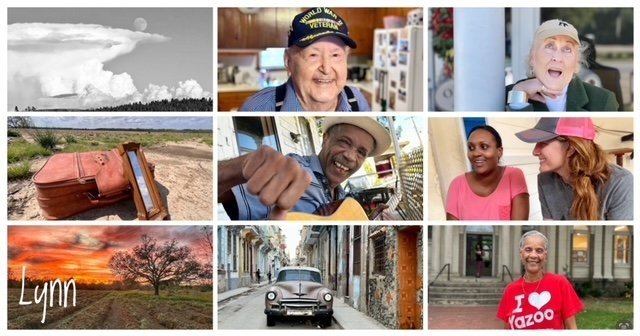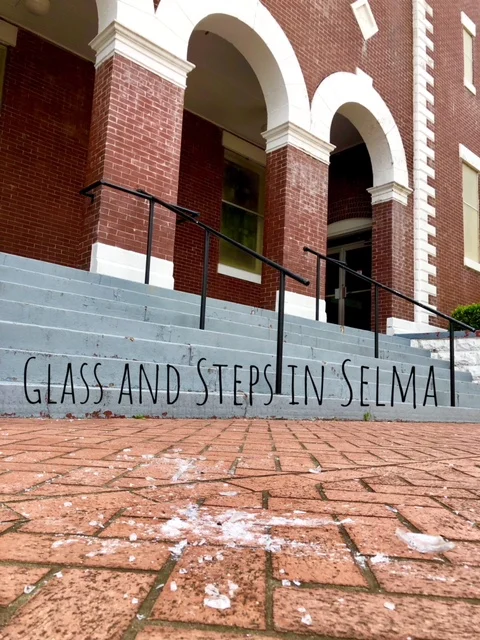Glass and Steps in Selma
Stopping at Brown Chapel AME Church in Selma on a road trip through Alabama with my best friend, Kendall, we picked up the pieces of a broken bottle from the brick walkway in front of the church. The clear, big pieces along the steps were easy to get, but the bottle had shattered into a piercing powder close to the monument of Dr. Martin Luther King Jr. and those who gave their lives to "overcome injustice and secure the right to vote."
Demetrius stopped on his way to work cutting hair and asked if we needed a broom. He walked across the street, named after Dr. King, to borrow one from a friend. He pulled a phone book out of his backpack and tore off the cover for a dustpan.
Pointing to the red Solo cups, bottles and plastic bags on the grass across the street at the George Washington Carver Housing Project, he said, "It's a shame people don't respect this area. Most people here don't even vote. We don’t stand up for anything anymore."
"Here" is the heart of the voting rights movement where African Americans were rejected by the Dallas County Board of Registrars when they tried to register to vote (only 156 of the county’s 15,000 voting-age African Americans were registered to vote in 1961) and were denied the right to assemble by a local judge. Brown Chapel and other churches in Selma became sanctuaries for activists and organizers. Many residents in the George Washington Carver homes participated in the voting rights movement. They also fed supporters from out of town and gave them a place to stay.
We tried to put ourselves in the shoes of those who walked up and down the seven steps when Brown Chapel was just a church in a small black-belt town on the Alabama River. When local teachers, parents, students, and neighbors faced brutality, jail, and death and no one else around the country seemed to care.The church became headquarters for the SCLC (Southern Christian Leadership Conference). Dr. King said they "had gone too far to turn back” but the path and outcome of their right to vote was still unclear. In those uncertain days, minds must have been filled with anger, determination, doubt, fear, frustration, dedication, hope, and despair as they walked up and down the steps.
Inside the red brick walls of Brown Chapel, Dr. King said, "A man dies when he refuses to stand up for that which is right. A man dies when he refuses to stand up for justice. A man dies when he refuses to take a stand for that which is true." He was 36 years old and would be killed three years later while standing up for justice.
After we picked up the glass, we sat on the steps and read the history of the church and the marches. On Sunday, March 7, 1965, 600 black protesters gathered there to march from Selma to Montgomery. They were turned back at the other side of the Edmund Pettus Bridge by state troopers with tear gas, bully clubs, whips, and barbed wire wrapped around rubber tubes. The marchers were chased back to the church and the injured returned for medical care. Videos and pictures of "Bloody Sunday" got the country's attention, including President Johnson. On March 21, two weeks after "Bloody Sunday," 3,200 freedom supporters from across the country, some of them white, crowded around the church under federal protection and walked 54 miles to Montgomery. The Voting Rights Act was signed into law five months later.
From those steps, on March 21,1965, The New York Times reported that Dr. King told the crowd "You will be the people that will light a new chapter in the history books of our nation...Walk together, children, don't you get weary, and it will lead us to the promised land. And Alabama will be a new Alabama, and America will be a new America."
Kendall and I sat on those steps asking questions. What would it take to inspire people to stand up together, again, for what is right? Can any leader or cause bring our divided country back together? What do I believe in enough to die for, or at least stand up for?
Brown Chapel AME Church shows that during one of the darkest moments in American history, people standing up for justice and truth can bring change worth dying for.
Demetrius was right, we need to remember and respect what happened here.





